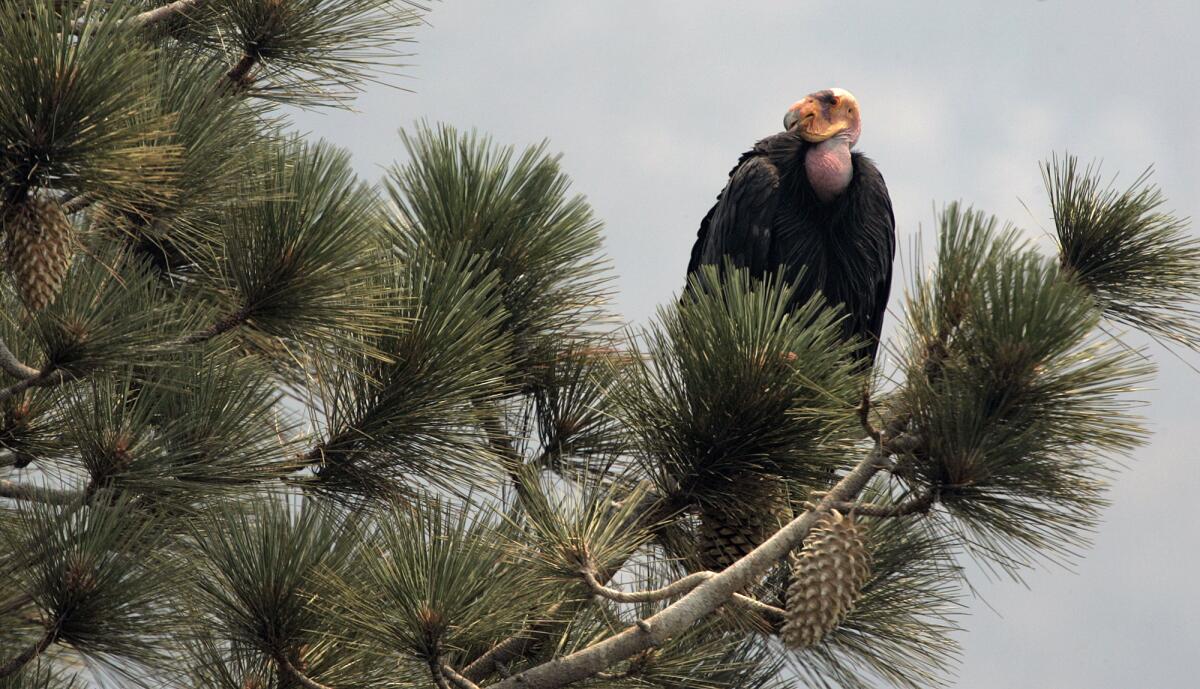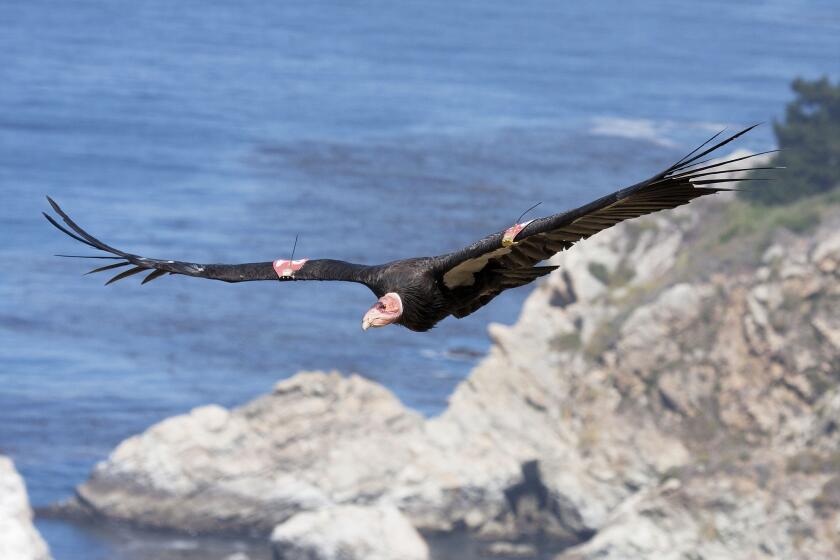Fate of California condors unknown after sanctuary burns

- Share via
SAN JOSE — The wildfires scorching huge parts of California have destroyed a sanctuary for the endangered California condor, with the fates of several of the birds, including a chick, unknown.
A blaze began last Wednesday in the Los Padres National Forest. By Friday, it had destroyed the 80-acre sanctuary in Big Sur that since 1997 has been used to release captive-bred condors into the wild, the San Jose Mercury News reported.
The sanctuary lost pens, a research building and other facilities. The nonprofit Ventana Wildlife Society of Monterey, which ran the facility, is seeking $500,000 in donations to rebuild it.
There weren’t any people or condors at the facility when it burned, society Executive Director Kelly Sorenson told the Mercury News.
However, at least four condors in the area are unaccounted for. One is a 4-month-old chick named Iniko that was living in a nest in a redwood tree about a mile from the facility. The chick was too young to fly.
The parents flew away as the fire approached, but Sorenson said the remote camera that monitored the nest was destroyed Thursday as he and his family watched from home.
At least six of the giant birds were spotted in the park in late May, biologists said, a testament to the continued recovery of the species.
“We were horrified. It was hard to watch. We still don’t know if the chick survived, or how well the free-flying birds have done,” he said. “I’m concerned we may have lost some condors. Any loss is a setback. I’m trying to keep the faith and keep hopeful.”
The so-called Dolan fire is one of hundreds of wildfires that have killed at least seven people, burned more than 1,400 homes and other buildings, and prompted evacuation orders that affected tens of thousands of people.
One man was arrested on suspicion of arson in connection with the blaze.
Previous fires in Central California have burned condor territory. Six burned near condor nests, and in five of those incidents, the chicks survived in the hardy, fire-resistant redwood trees, Sorenson said.
Andean condors spent just 1% of their time aloft flapping their wings, mostly during take-off. One bird studied covered more than 100 miles without flapping.
“The redwoods they nest in provide good protection,” he said.
The California condor is the largest North American land bird, with a wingspan of up to nine feet.
In the early 1980s, all 22 condors remaining in the wild were trapped and brought into a captive-breeding program that began releasing the giant vultures into the Los Padres National Forest in 1992.
That flock has been expanding its range while other condors now occupy parts of California’s Central Coast, Arizona, Utah and Baja California, Mexico. There are more than 100 condors in Central California. The total wild population now numbers about 340.
More to Read
Sign up for Essential California
The most important California stories and recommendations in your inbox every morning.
You may occasionally receive promotional content from the Los Angeles Times.











